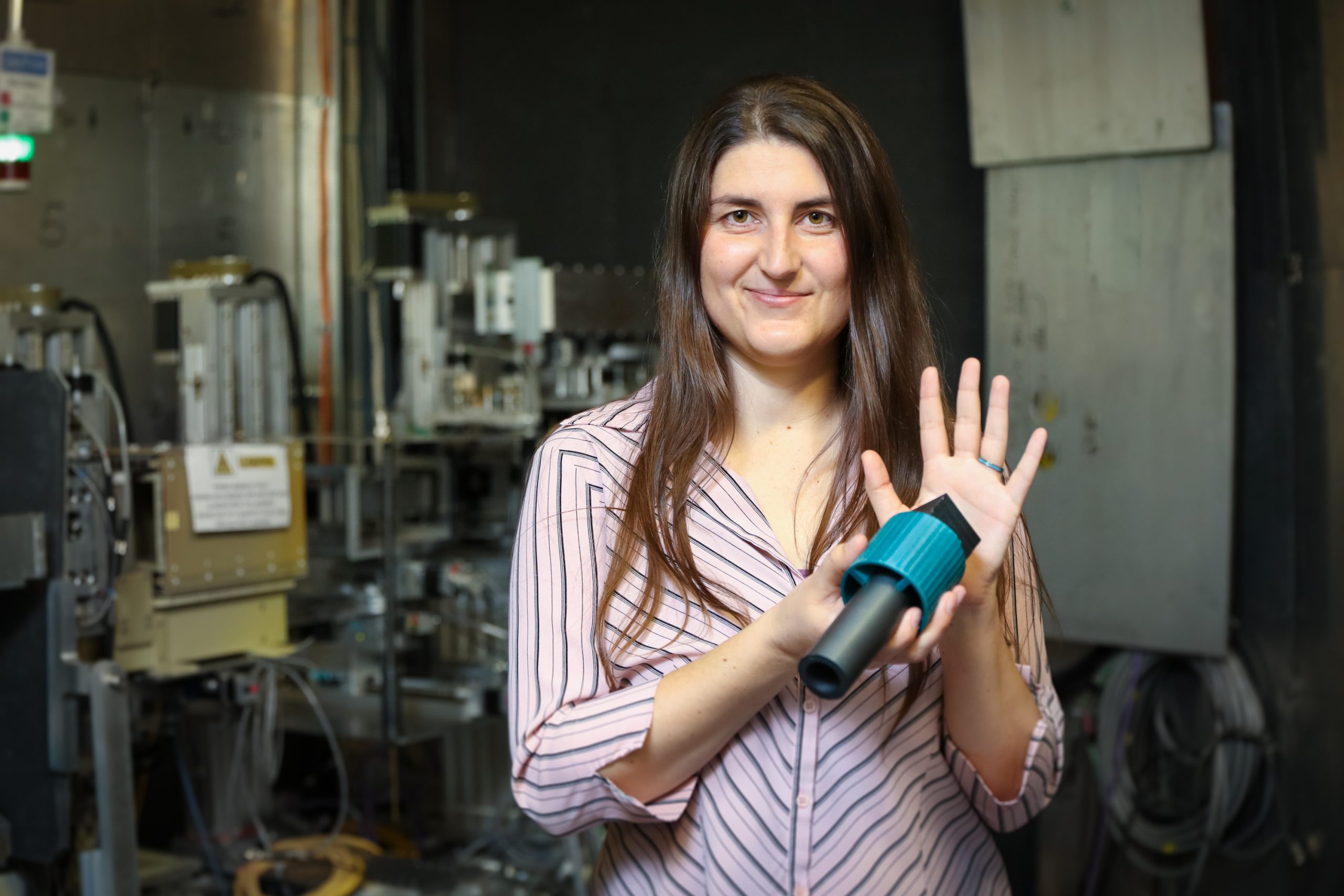June 28, 2022
To solve a long-standing puzzle about how long a neutron can “live” outside an atomic nucleus, physicists entertained a wild but testable theory positing the existence of a right-handed version of our left-handed universe. They designed a mind-bending experiment at the Department of Energy’s Oak Ridge National Laboratory to try to detect a particle that has been speculated but not spotted. If found, the theorized “mirror neutron” — a dark-matter twin to the neutron — could explain a discrepancy between answers from two types of neutron lifetime experiments and provide the first observation of dark matter.
“Dark matter remains one of the most important and puzzling questions in science — clear evidence we don’t understand all matter in nature,” said ORNL’s Leah Broussard, who led the study published in Physical Review Letters.
Neutrons and protons make up an atom’s nucleus. However, they also can exist outside nuclei. Last year, using the Los Alamos Neutron Science Center, co-author Frank Gonzalez, now at ORNL, led the most precise measurement ever of how long free neutrons live before they decay, or turn into protons, electrons and anti-neutrinos. The answer — 877.8 seconds, give or take 0.3 seconds, or a little under 15 minutes — hinted at a crack in the Standard Model of particle physics. That model describes the behavior of subatomic particles, such as the three quarks that make up a neutron. The flipping of quarks initiates neutron decay into protons.
“The neutron lifetime is an important parameter in the Standard Model because it is used as an input for calculating the quark mixing matrix, which describes quark decay rates,” said Gonzalez, who calculated probabilities of neutrons oscillating for the ORNL study. “If the quarks don’t mix as we expect them to, that hints at new physics beyond the Standard Model.”

To measure the lifetime of a free neutron, scientists take two approaches that should arrive at the same answer. One traps neutrons in a magnetic bottle and counts their disappearance. The other counts protons appearing in a beam as neutrons decay. It turns out neutrons appear to live nine seconds longer in a beam than in a bottle.
Over the years, perplexed physicists have considered many reasons for the discrepancy. One theory is that the neutron transforms from one state to another and back again. “Oscillation is a quantum mechanical phenomenon,” Broussard said. “If a neutron can exist as either a regular or a mirror neutron, then you can get this sort of oscillation, a rocking back and forth between the two states, as long as that transition isn’t forbidden.”
The ORNL-led team performed the first search for neutrons oscillating into dark-matter mirror neutrons using a novel disappearance and regeneration technique. The neutrons were made at the Spallation Neutron Source, a DOE Office of Science user facility. A beam of neutrons was guided to SNS’s magnetism reflectometer. Michael Fitzsimmons, a physicist with a joint appointment at ORNL and the University of Tennessee, Knoxville, used the instrument to apply a strong magnetic field to enhance oscillations between neutron states. Then the beam impinged on a “wall” made of boron carbide, which is a strong neutron absorber.
If the neutron does in fact oscillate between regular and mirror states, when the neutron state hits the wall, it will interact with atomic nuclei and get absorbed into the wall. If it is in its theorized mirror neutron state, however, it is dark matter that will not interact.
So only mirror neutrons would make it through the wall to the other side. It would be as if the neutrons had gone through a “portal” to some dark sector — a figurative concept used in the physics community. Yet, the press reporting on past related work had fun taking liberties with the concept, comparing the theorized mirror universe Broussard’s team is exploring to the “Upside Down” alternate reality in the TV series “Stranger Things.” The team’s experiments were not exploring a literal portal to a parallel universe.
“The dynamics are the same on the other side of the wall, where we try to induce what are presumably mirror neutrons — the dark-matter twin state — to turn back into regular neutrons,” said co-author Yuri Kamyshkov, a UT physicist who with colleagues has long pursued the ideas of neutron oscillations and mirror neutrons. “If we see any regenerated neutrons, that could be a signal that we’ve seen something really exotic. The discovery of the particle nature of dark matter would have tremendous implications.”
Read more at ornl.gov/news.
Related Publication: Gonzales, F.M. et. al. (2021). Improved Neutron Lifetime Measurement with UCNτ. Physical Review Letters, 127, 162501. https://doi.org/10.1038/s41567-020-01110-1
